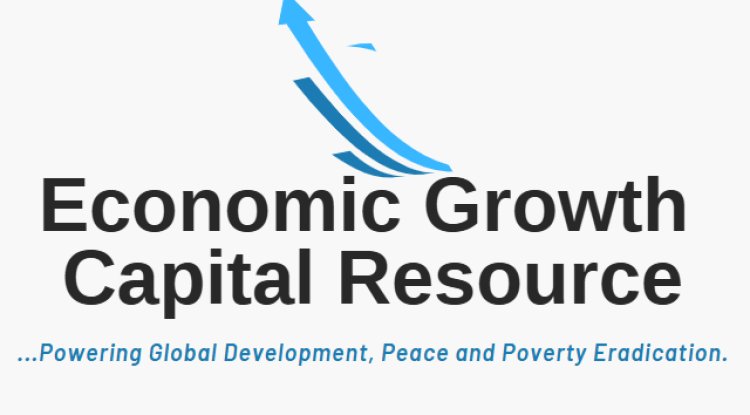Sub-National Banks of Industry
Sub-National Banks of Industry are a distinct class of financial institutions that operate at the sub-national or regional level, embedded within the broader national economic framework. Unlike their national-level counterparts, these specialized banks are laser-focused on nurturing localized industrial development. This mission underpins their role as powerful engines of economic growth and regional prosperity.

Sub-National Banks of Industry serve as dynamic catalysts at their core, harnessing their nuanced understanding of local economic dynamics to craft and execute targeted strategies. By tailoring financial products, offering incentives, and providing technical guidance, these banks fuel the expansion of industries with inherent growth potential within their regions. This concerted effort nurtures homegrown enterprises, fuels innovation, and facilitates access to crucial capital, stimulating job creation, fostering increased productivity, and infusing vibrancy into the economic landscape of their operational domains.
Collaboration emerges as a cornerstone of their modus operandi. Sub-National Banks of Industry collaborate closely with local governments, research institutions, and industry associations, creating an ecosystem conducive to the flourishing of industries. These partnerships nurture entrepreneurial spirit, extend support to startups, and guide established businesses on paths of evolution and expansion. This symbiotic exchange of knowledge propels the diffusion of innovation and aids the development of industries pivotal to the region's competitive edge.
Sub-National Banks of Industry, in essence, epitomize the champions of localized industrial growth. As pivotal intermediaries, they traverse the financial terrain, bridging gaps, providing strategic direction, and amplifying the potential of industries unique to specific regions. Their specialized focus, collaborative ethos and unwavering commitment to regional economic development solidify their standing as instrumental partners in driving progress, fostering innovation, and bolstering industries. In concert with national-level and international players, Sub-National Banks of Industry carve a trajectory towards a more resilient, balanced, and vibrant economic future, laying the foundation for sustained growth and prosperity.
Sub-National Banks of Industry emerge as powerful engines of progress within the complex tapestry of economic growth and development. These institutions wield their influence to accelerate regional advancement, complementing the efforts of their national-level counterparts. Sub-National Banks of Industry contribute to the broader canvas of national and international economic growth while propelling the ambitious goal of eradicating poverty at the grassroots level by orchestrating a symphony of localized development.
Sub-National Development
Sub-National Banks of Industry wield a multi-faceted arsenal of tools to accelerate sub-national development, amplifying their initiatives' impact and complementing national-level institutions' efforts. They strategically deploy financial resources to support and nurture local industries, stimulating entrepreneurship and creating a conducive ecosystem for business innovation. By fostering the growth of industries deeply rooted in the region's strengths, these banks catalyze job creation, enhance productivity, and attract investments that infuse fresh capital into the local economy.
Moreover, Sub-National Banks of Industry function as knowledge hubs and innovation centers, providing local businesses with technical assistance, mentorship, and capacity-building programs. This nurturing approach empowers enterprises to overcome challenges, adapt to evolving market dynamics, and seize emerging opportunities, thereby fortifying the foundation of sustainable development.
Collaborative Progress Paradigm
The collaboration between Sub-National Banks of Industry and national-level institutions embodies a harmonious partnership driven by complementary synergy rather than competitive rivalry. These entities converge their efforts synchronized, crafting a powerful orchestration of developmental initiatives that resonate across all levels of governance. This harmonization is rooted in the recognition that both levels of institutions possess unique strengths that, when combined, generate a more potent force for progress.
Sub-National Banks of Industry offer localized expertise finely attuned to their regions' distinct economic, social, and industrial nuances. This localized insight enables them to design interventions that align with the specific needs and opportunities within their operational areas. On the other hand, national-level institutions possess a broader strategic vision and a macroeconomic perspective encompassing overarching national goals.
The seamless dovetailing of localized expertise with national vision results in a holistic developmental approach. With their finger on the regional pulse, Sub-National Banks of Industry identify growth opportunities and industry potential that can significantly contribute to regional advancement and national economic growth. By harmonizing these insights with the broader national strategy, the collaboration ensures that developmental efforts are finely calibrated to address regional specificities and national imperatives.
This partnership extends beyond administrative boundaries, creating a virtuous cycle of progress. As Sub-National Banks of Industry stimulate localized growth and bolster industries, the resulting economic vibrancy radiates outward, bolstering the national economy. This, in turn, enhances the capacity of national-level institutions to implement effective policies and initiatives.
Ultimately, the collaboration between Sub-National Banks of Industry and national-level institutions transcends mere cooperation; it represents a fusion of knowledge, resources, and aspirations that amplify the overall impact of developmental endeavors. It demonstrates that a unified approach, where localized insights harmonize with national strategies, is the linchpin to achieving holistic and sustainable development. In this way, the synergy between these entities embodies a powerful paradigm that bridges the gap between regional specificities and national objectives, propelling nations toward comprehensive progress.
National and International Economic Growth
The culmination of localized efforts orchestrated by Sub-National Banks of Industry creates a profound ripple effect that resonates across national and international boundaries. As sub-national regions flourish and industries thrive, their collective growth contributes to a robust national economy. The infusion of fresh ideas, innovation, and investment from localized development spills into national markets, spurring economic dynamism and enhancing global competitiveness.
This synergistic dance between Sub-National Banks of Industry and national-level institutions translates into a broader impact beyond domestic shores. As regions become hotbeds of innovation and industrial prowess, they attract foreign investments and collaborations, strengthening economic ties and fostering international trade relationships. The resulting economic growth and stability contribute to a favorable environment for international investment, forging a path toward sustainable global prosperity.
Grassroots Transformation
Perhaps the most profound impact of Sub-National Banks of Industry lies in their pivotal role in accelerating the end of poverty from the grassroots level. By strategically targeting economic interventions, these banks uplift marginalized communities, provide access to financial services, and generate employment opportunities that directly benefit the most vulnerable segments of society.
As localized development initiatives take root and industries burgeon, the prosperity generated trickles down to the grassroots, mitigating poverty's grip and fostering inclusive growth. Sub-National Banks of Industry are uniquely positioned to identify and address the specific needs of local communities, deploying resources to enhance healthcare, education, and social infrastructure. This multi-faceted approach improves the quality of life for individuals at the base of the economic pyramid, creating a ripple effect that resonates upwards, ultimately contributing to the broader objective of eradicating poverty nationally and globally.
Sub-National Banks of Industry plays a melodic and transformative role in the symphony of economic development. Through their localized focus, collaborative synergy with national-level institutions, and unwavering commitment to poverty eradication, these banks orchestrate a harmonious blend of progress that resonates from sub-national regions to the global stage. By nurturing industries, empowering communities, and propelling sustainable growth, Sub-National Banks of Industry pave a dynamic path toward a future where prosperity knows no boundaries, poverty is, but a memory, and the world resonates with the symphony of shared development and inclusive prosperity.
The importance of sub-national governments cannot be overstated. They are the building blocks of a strong and vibrant nation, serving as the closest representatives to the people and possessing a deep understanding of local needs, resources, and aspirations. While global economic integration is crucial, it is equally essential for sub-national governments to maintain their autonomy and exercise independent decision-making powers regarding economic development.
One key aspect discussed in this book is the need for sub-national governments to prioritize and leverage their unique resources and advantages. Sub-national entities can capitalize on these assets by identifying their strengths, be it natural resources, cultural heritage, human capital, or geographical location, to foster sustainable and inclusive economic growth. This entails developing strategic plans that align with local priorities and harnessing the potential of indigenous industries, local businesses, and entrepreneurship.
Furthermore, we have explored the significance of investing in education, innovation, and research and development at the sub-national level. By nurturing a skilled workforce and promoting a culture of innovation, sub-national governments can attract investment, create job opportunities, and stimulate economic growth from within. Encouraging collaboration between academia, industry, and government is vital in fostering an ecosystem supporting knowledge-based industries and driving technological advancements.
Another crucial aspect this book highlights is the importance of fostering a conducive business environment. Sub-national governments must adopt transparent and efficient regulatory frameworks, simplify bureaucratic procedures, and ensure a level playing field for businesses to thrive. By fostering a business-friendly climate that encourages local and foreign investment, sub-national entities can attract industries, create employment opportunities, and generate revenue, thus strengthening their economies.
Moreover, we have explored the significance of regional cooperation and networking among sub-national governments. By forming alliances, sharing best practices, and collaborating on common goals, sub-national entities can pool resources, enhance their bargaining power, and collectively address regional challenges. This includes joint efforts in infrastructure development, trade facilitation, and sharing knowledge and expertise.
It is essential to note that achieving sub-national prosperity requires visionary leadership, effective governance, and robust institutional frameworks. Transparency, accountability, and citizen participation are vital elements in ensuring that sub-national governments remain responsive to the needs and aspirations of their constituents. Empowering local communities, promoting inclusivity, and prioritizing sustainable development are fundamental principles that underpin the journey toward sub-national prosperity.
The pursuit of independent ways for state, provincial, regional, and local governments to flourish without foreign control is a realistic aspiration and imperative for sustainable and inclusive development. Sub-national entities can unlock their full potential and chart their path toward prosperity by leveraging their unique strengths, investing in education and innovation, fostering a business-friendly environment, promoting regional cooperation, and ensuring effective governance.
"Sub-National Prosperity" serves as a guide and inspiration for sub-national governments worldwide, emphasizing the significance of self-reliance, autonomy, and strategic planning in achieving sustainable economic growth, social progress, and the overall well-being of their citizens. The insights in this book will catalyze positive change, encouraging sub-national governments to take charge of their destinies and forge a prosperous future for their communities.




















